[spring] Spring MVC - security(上)
这部分的内容基本上和 [spring] rest api security 是重合的,主要就是添加 验证(authentication)和授权(authorization)这两个功能
即:
- 用户提供的验证信息是否正确
- 用户是否有权限访问当前资源
整体流程大致如下:

项目设置
这里依旧使用 https://start.spring.io/ 去进行配置,需要的 POM 如下:
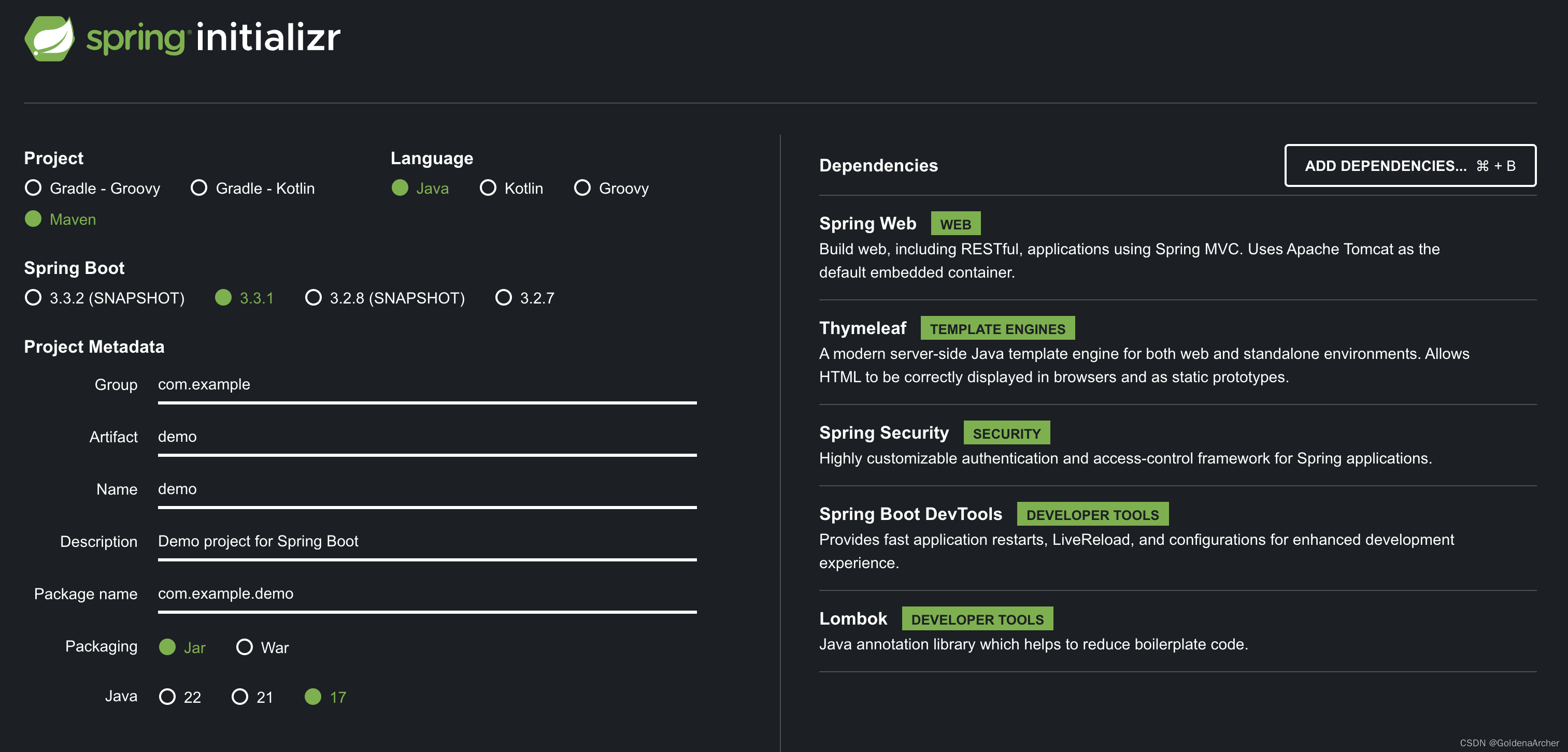
这里和 [spring] rest api security 有区别的地方在于添加了一个 thymeleaf 的依赖:
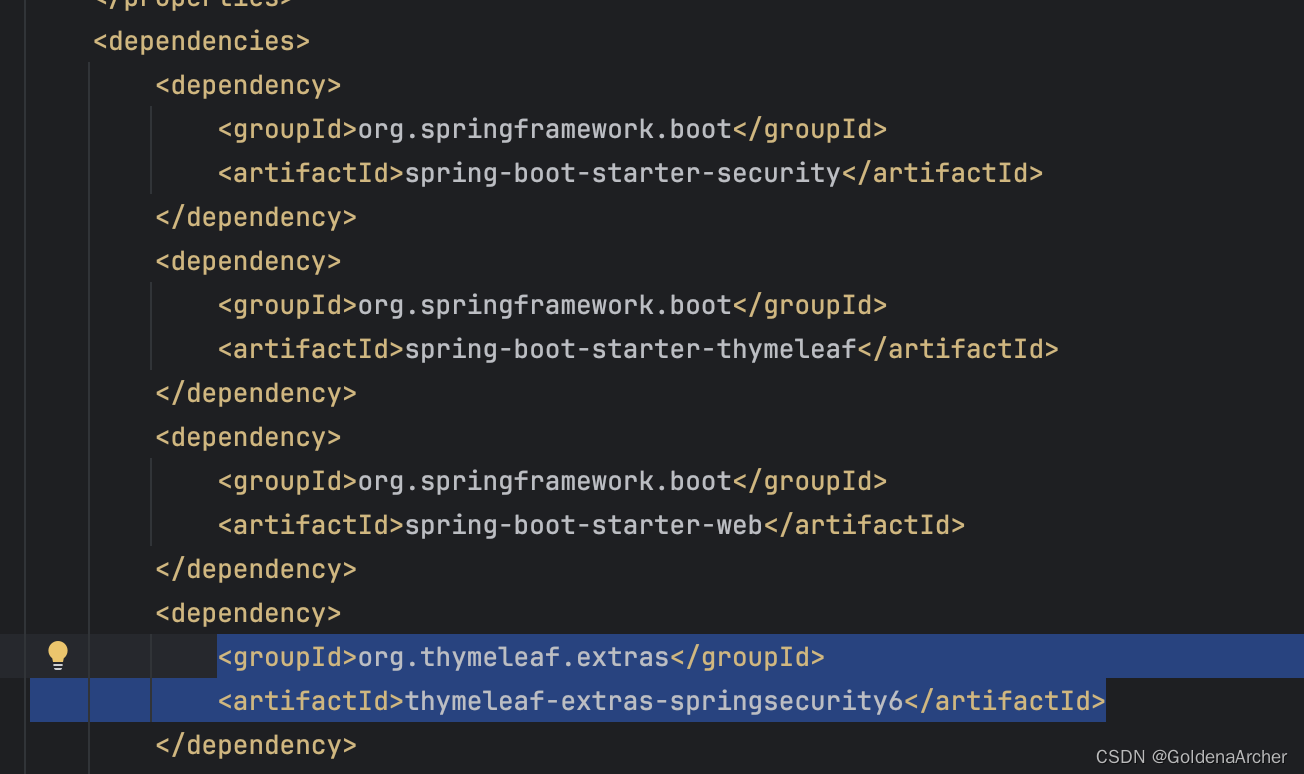
这个也是 https://start.spring.io/ 自动添加的
基础 view
spring boot 会自动实现一个登录的页面,这里主要是新建一个 DemoController 去进行路径的 mapping,即提供一个登录完成后重定向的页面
代码实现如下:
-
java controller
@Controller public class DemoController {@GetMapping("/")public String showHome() {return "home";} } -
HTML 模板
<!DOCTYPE html> <html lang="en"><head><meta charset="UTF-8" /><title>Home</title></head><body><h2>Home Page</h2><hr />Dummy Home Page</body> </html>
实现效果如下:
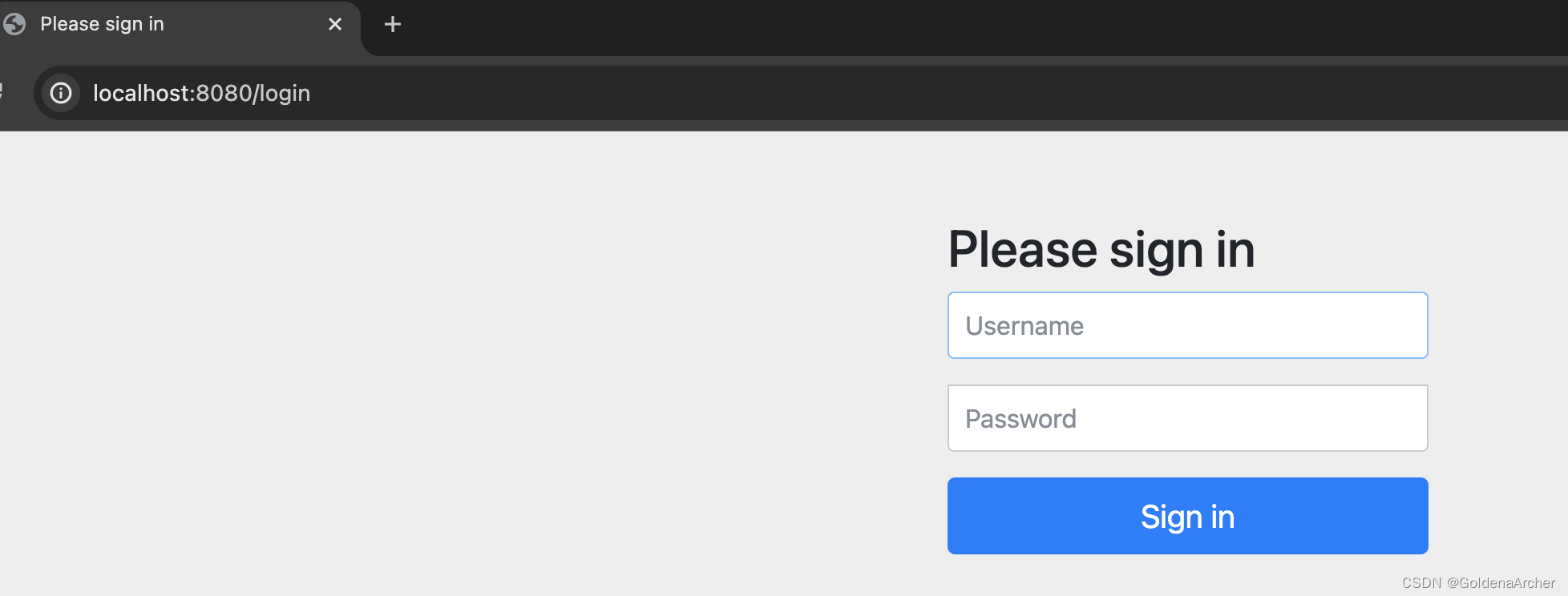
⚠️:这个登录页面是 spring boot 实现的
在没有任何配置的情况下,spring boot 默认提供的用户名是 admin,密码则是自动生成的一串哈希值,会在终端显现:

用户信息验证成功后,就会重定向到 mapping 好的首页:
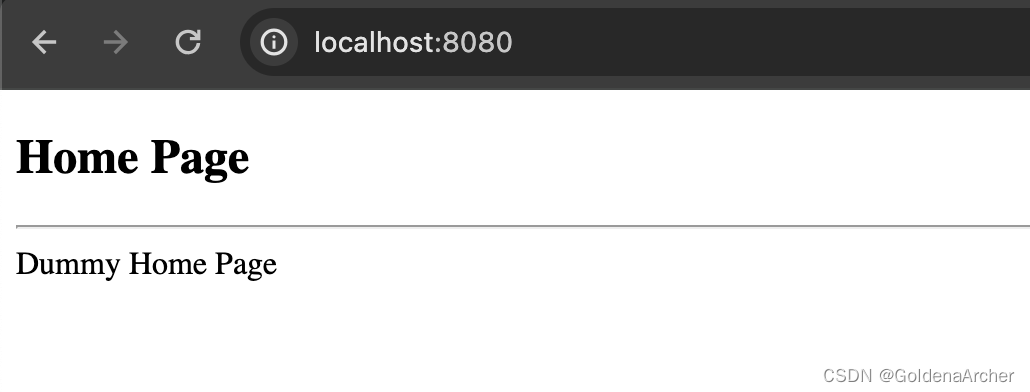
基本安全配置
这里就是在代码里手动写死用户名、密码和权限,这个目前是为了简单实现,后面会添加数据库部分的实现
java 代码如下:
@Configuration
public class DemoSecurityConfig {@Beanpublic InMemoryUserDetailsManager userDetailsManager() {UserDetails john = User.builder().username("john").password("{noop}test123").roles("EMPLOYEE").build();UserDetails mary = User.builder().username("mary").password("{noop}test123").roles("EMPLOYEE", "MANAGER").build();UserDetails susan = User.builder().username("susan").password("{noop}test123").roles("EMPLOYEE", "MANAGER", "ADMIN").build();return new InMemoryUserDetailsManager(john, mary, susan);}
}配置完并自动重启项目后,内存中的用户信息就具有更高的权重值,spring boot 也不会自动生成哈希值去和 admin 进行适配
自定义登录页面
这里有 3 个步骤要去做:
-
重新写 spring 的安全配置,使用自己的 HTML 模板取代 spring boot 内置的 HTML 模板
具体实现如下:
@Configuration public class DemoSecurityConfig {// 省略 inMemoryUserDetails 的实现@Beanpublic SecurityFilterChain filterChain(HttpSecurity httpSecurity) throws Exception {httpSecurity.authorizeHttpRequests(configurer ->configurer.anyRequest().authenticated()).formLogin(form ->form.loginPage("/showMyLoginPage").loginProcessingUrl("/authenticateUser") // no controller request mapping for this.permitAll());return httpSecurity.build();} }其中:
-
SecurityFilterChain主要是用来处理 HTTP 请求,对其进行安全处理 -
HttpSecurity则是具体对 HTTP 请求进行安全处理的配置 -
authorizeHttpRequests代表所有的 HTTP 请求都必须要进行安全处理,即登录验证简单的说,访客是没有权限访问当前应用
-
formLogin是表单登录验证这里主要进行 3 个处理
-
loginPage是登录页面的路径 -
loginProcessingUrl是提交登录信息的路径参考之前在 [spring] Spring MVC & Thymeleaf(上) 中实现的
@RequestMapping("/processForm")"不过这个路径会被 spring 在内部处理,所以不需要手动实现一个 controller 去完成功能
-
-
permitAll()代表所有人都可以访问,包括访客这是一定要加的,不然登录页面本身就会需要用户验证
-
-
在 controller 层进行配置,对登录页面进行重定向
@Controller public class LoginController {@GetMapping("/showLoginPage")public String showLoginPage() {return "plain-login";} }这是另一个 controller,专门负责登录页面的重定向,与 DemoController 不一样
可以理解成这个 controller 负责的是所有不需要验证信息的访问,包括后面会处理的报错页面
-
实现 HTML 模板引擎
<!DOCTYPE html> <html lang="en" xmlns:th="http://www.thymeleaf.org"><head><meta charset="UTF-8" /><title>Custom Login Page</title></head><body><h3>My Custom Login Page</h3><form method="post" action="#" th:action="@{/authenticateUser}"><p><label for="username">Username:</label><input type="text" name="username" id="username" /></p><p><label for="password">Password:</label><input type="password" name="password" id="password" /></p><input type="submit" value="Login" /></form><script src="http://localhost:35729/livereload.js"></script></body> </html>其中
th:action="@{/authenticateUser}"这个语法是将authenticateUser绑定到当前路径下。如当前路径为http://localhost:8080/sighup,那么这个表单提交的 URL 为http://localhost:8080/sighup/authenticateUser。这样实现的优点在于不用写死路径
添加错误信息
目前登录页面是没有报错信息的,想要解决这个方法也很简单,可以使用 error 这个状态:
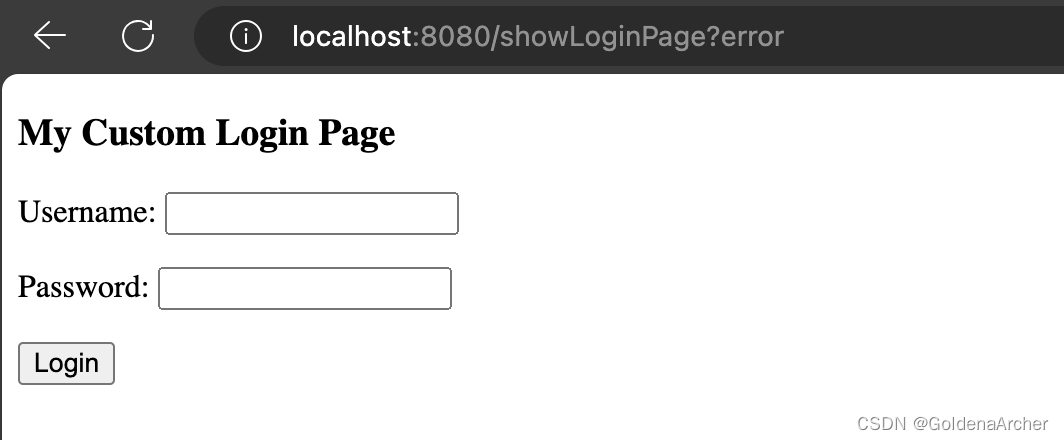
⚠️:这是 spring boot 实现的自动重定向,想要修改的话也可以在 formLogin 进行自定义配置
这里实现一个比较通用的报错信息:
<div th:if="${param.error}"><i>You have entered invalid username/password.</i>
</div>
最终显示效果:
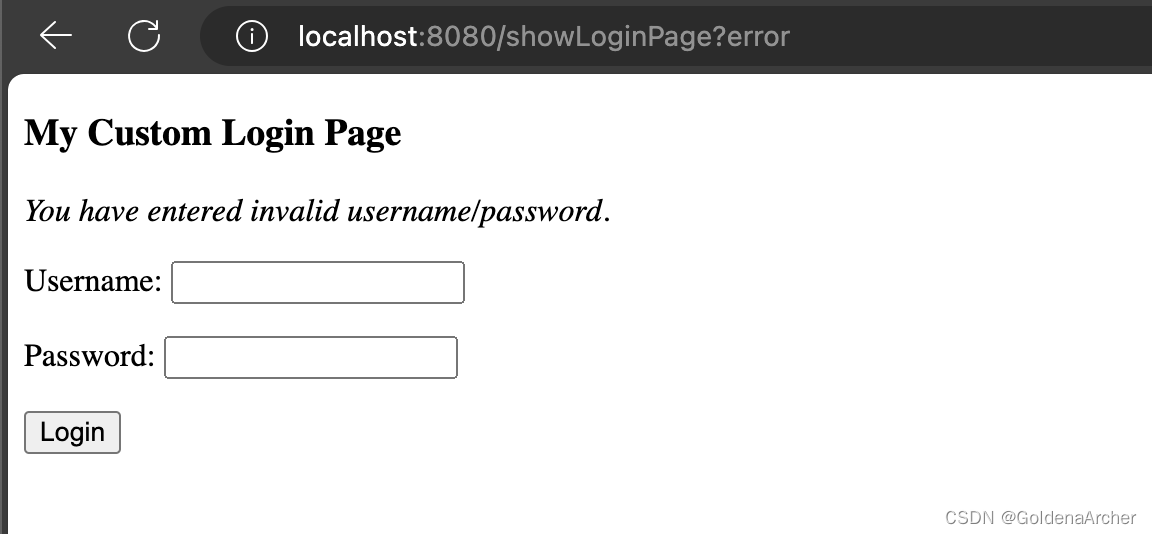
添加登出功能
这里 logout 也使用 spring boot 的默认方法,config 修改如下:
@Beanpublic SecurityFilterChain filterChain(HttpSecurity httpSecurity) throws Exception {httpSecurity.authorizeHttpRequests(configurer ->configurer.anyRequest().authenticated()).formLogin(form ->form.loginPage("/showLoginPage").loginProcessingUrl("/authenticateUser") // no controller request mapping for this.permitAll()).logout(LogoutConfigurer::permitAll);return httpSecurity.build();}
HTML 模板更新如下:
<form action="#" method="post" th:action="@{/logout}"><input type="submit" value="Logout " />
</form>
实现效果:

这里 CSS 修改了一下,不过主要核心内容还是一样的
用户 & 权限
下面会实现根据用户权限限制用户访问的功能
显示用户名和权限
spring security 会将当前用户的验证信息传导 view 层,获取方法如下:
<!DOCTYPE html>
<htmllang="en"xmlns:th="http://www.thymeleaf.org"xmlns:sec="http://www.thymeleaf.org/extras/spring-security"
><body><p>User: <span sec:authentication="principal.username"></span> <br /><br />Role(s): <span sec:authentication="principal.authorities"></span></p><script src="http://localhost:35729/livereload.js"></script></body>
</html>
渲染结果:
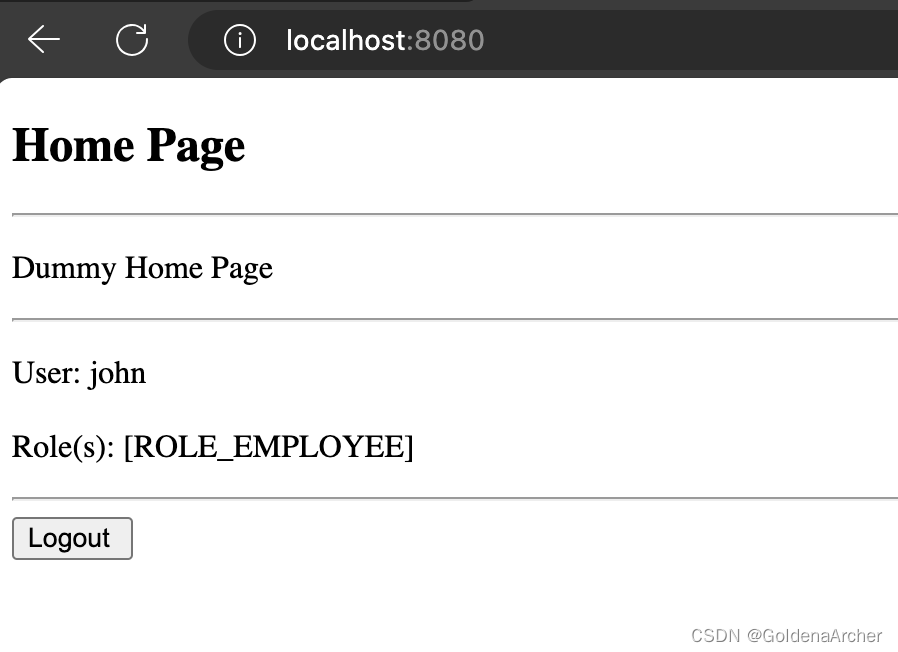
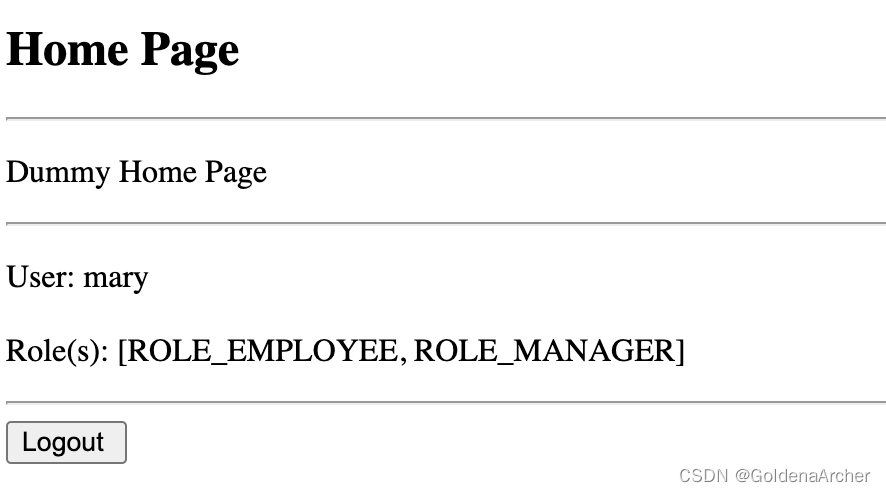
根据权限限制访问
这里可以通过两步实现:
-
添加对应的 controller & view 层实现重定向功能
⚠️:这里用户已经登录成功了,所以对应的功能在
DemoController中实现:@GetMapping("/leaders")public String showLeaders() {return "leaders";}随后就是更新 Home 页面中,添加重定向的功能:
<p><a th:href="@{/leaders}">Leadership Meeting</a>(Only for Manager peeps) </p>以及实现对应的 Leaders 页面:
<!DOCTYPE html> <html lang="en" xmlns:th="http://www.thymeleaf.org"><head><meta charset="UTF-8" /><title>Leaders</title></head><body><h2>Leaders</h2><hr /><p>Page only available for Manager role</p><a th:href="@{/}">Back to Home Page</a><script src="http://localhost:35729/livereload.js"></script></body> </html> -
在 security config 中限制用户的访问权限
实现如下:
@Beanpublic SecurityFilterChain filterChain(HttpSecurity httpSecurity) throws Exception {httpSecurity.authorizeHttpRequests(configurer ->configurer.requestMatchers("/").hasRole("EMPLOYEE").requestMatchers("/leaders/**").hasRole("MANAGERS").requestMatchers("/systems/**").hasRole("ADMIN").anyRequest().authenticated()).formLogin(form ->form.loginPage("/showLoginPage").loginProcessingUrl("/authenticateUser") // no controller request mapping for this.permitAll()).logout(LogoutConfigurer::permitAll);return httpSecurity.build();}完成这一步后,只有有对应权限的用户可以访问对应的页面
John 只有
EMPLOYEE的权限,因此只能访问首页,而 mary 和 susan 有MANAGERS的权限,所以它们可以访问leaders下的资源
实现效果如下:

⚠️:同样的变化也可以加到 admin 权限和 system 页面上,这里就不重复了
拒绝访问页面
目前因为 spring 没有对相应的报错页面进行配置,因此当权限不够(403)时,会显示 whitelabel 页面。鉴于大多数用户并不能够了解 HTTP 状态码,显然这不是一个用户友好型的实现
重定向一个对应的报错页面的实现就能够很好的提升用户体验
这里的实现和自定义登录/登出页面相似,主要是在 exceptionHandling 添加对应的报错页面:
@Beanpublic SecurityFilterChain filterChain(HttpSecurity httpSecurity) throws Exception {httpSecurity.authorizeHttpRequests(configurer ->configurer.requestMatchers("/").hasRole("EMPLOYEE").requestMatchers("/leaders/**").hasRole("MANAGER").requestMatchers("/systems/**").hasRole("ADMIN").anyRequest().authenticated()).formLogin(form ->form.loginPage("/showLoginPage").loginProcessingUrl("/authenticateUser") // no controller request mapping for this.permitAll()).logout(LogoutConfigurer::permitAll).exceptionHandling(configurer ->configurer.accessDeniedPage("/access-denied"));return httpSecurity.build();}
controller 的实现如下:
@GetMapping("/access-denied")public String showAccessDenied() {return "access-denied";}
⚠️:这里的实现我也放在了 LoginController 下面……其实感觉这个 controller 应该重命名为 auth controller 比较好
HTML 模板实现如下:
<!DOCTYPE html>
<html lang="en" xmlns:th="http://www.thymeleaf.org"><head><meta charset="UTF-8" /><title>Access Denied</title></head><body><h2>Access Denied - You are not ahtorized to access this resource.</h2><a th:href="@{/}">Back to Home Page</a><script src="http://localhost:35729/livereload.js"></script></body>
</html>
最终效果:

根据权限显示用户信息
目前的首页显示时完全一致的,不过对于 EMPLOYEE 权限的用户显示无法访问的页面,意义不是很大
这时候可以使用 spring security 提供的 sec:authorize="hasRole('ROLE')" 语法:
<p sec:authorize="hasRole('MANAGER')"><a th:href="@{/leaders}">Leadership Meeting</a>(Only for Manager peeps)
</p><p sec:authorize="hasRole('ADMIN')"><a th:href="@{/systems}">System Meeting</a>(Only for ADMIN peeps)
</p>
效果如下:
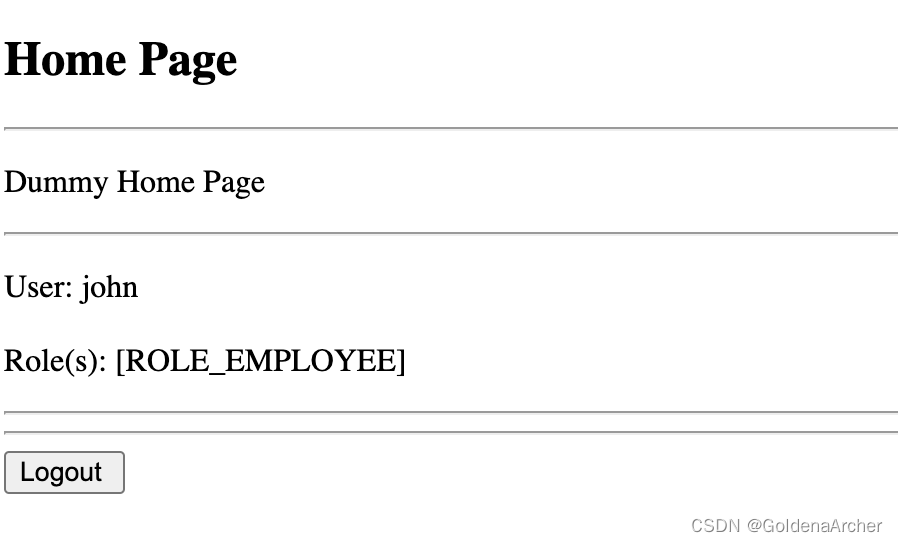
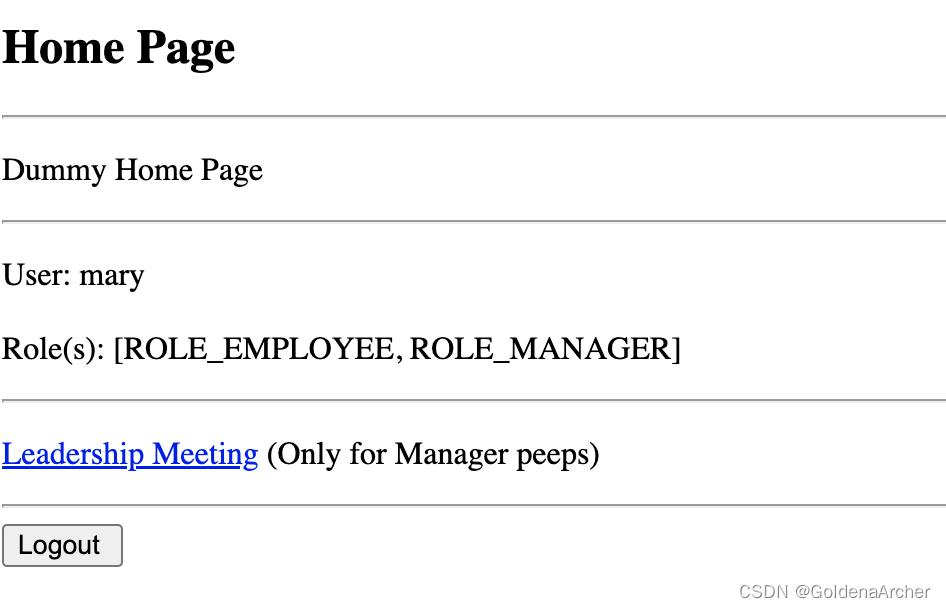
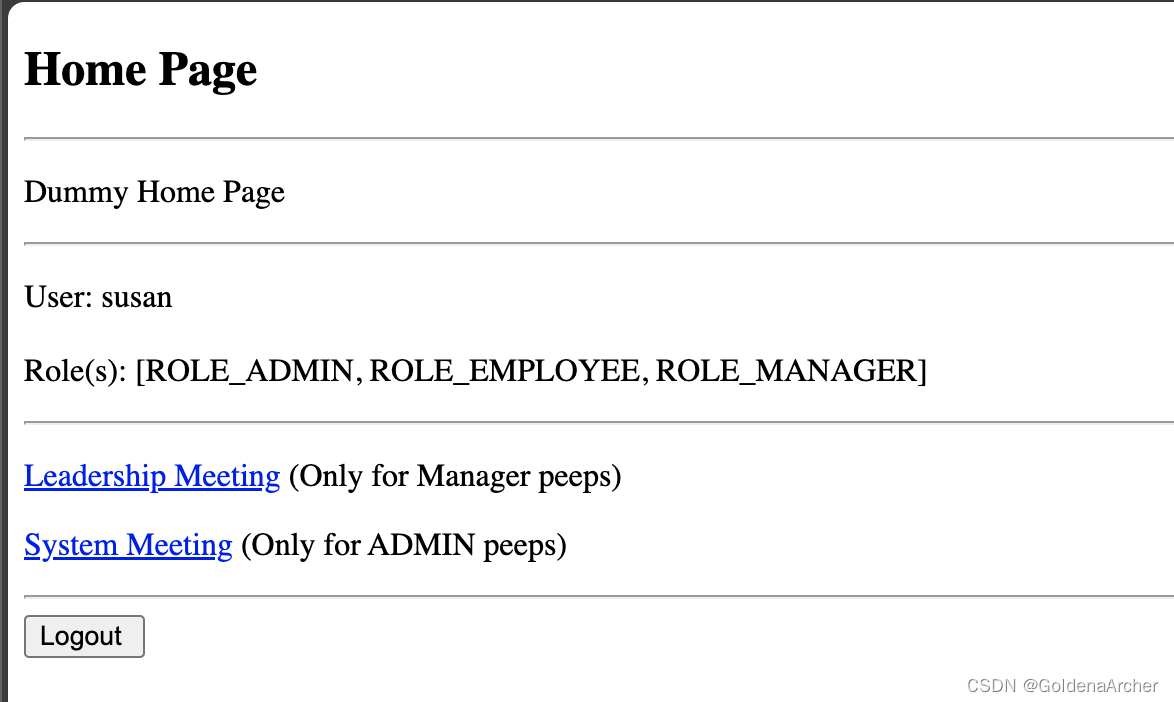
目前的项目结构如下:
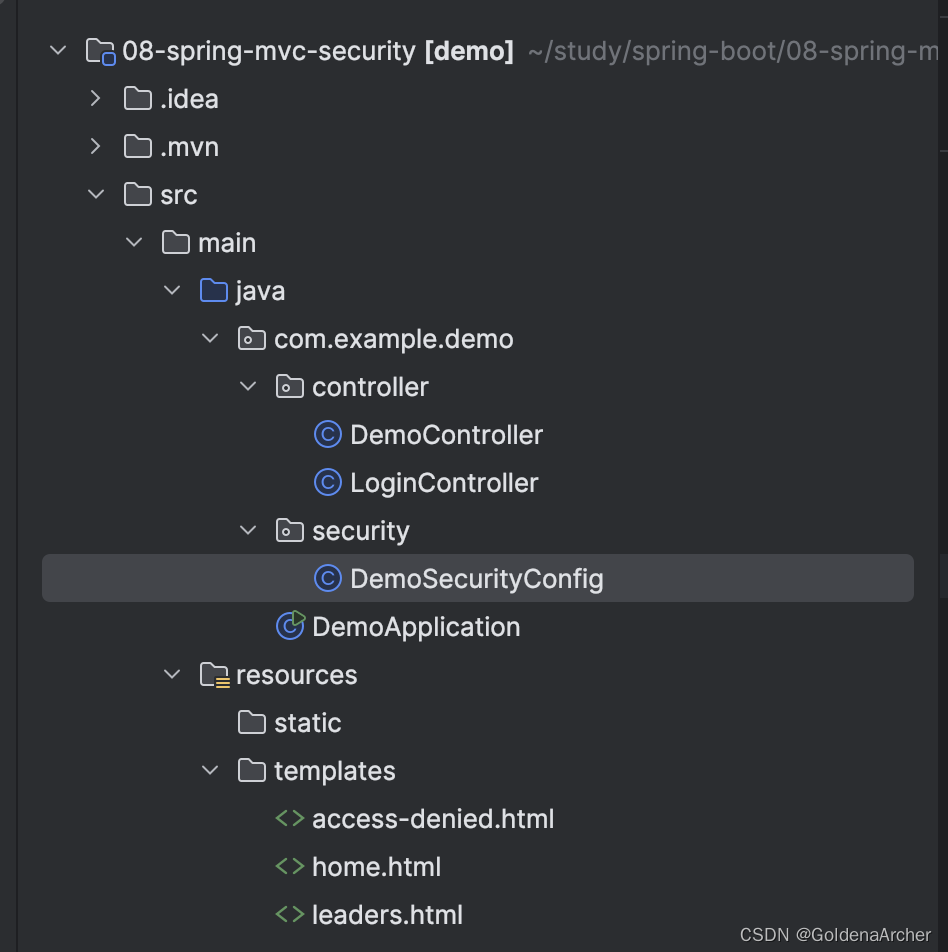




实现TCP三次握手)

——数学问题)

架构解析:深入理解 Kylin 的架构设计)

](http://pic.xiahunao.cn/大数据面试题之Presto[Trino](6))


)



-arm版交叉编译-qt-5.12.12源码)

23-499)